A well-crafted menu is not just necessary; it's a key differentiator that can elevate your restaurant's appeal. By improving your restaurant menu, you can enhance your restaurant.
Learn the secrets to elevating your dining experience with our expert guide on how to improve your restaurant menu.
How to Improve Your Restaurant Menu with 13 Ways
1. Use QR Codes
QR codes are a modern, efficient way to streamline customers' dining experience.
Here's how to implement them effectively:
- Placement: Place QR codes strategically on your tables or menu boards.
- Simplicity: Ensure the code leads directly to your online menu.
- Update Regularly: Keep the digital menu updated to reflect real-time changes.
Adopting QR codes offers a contactless, eco-friendly option that aligns with current technological trends.
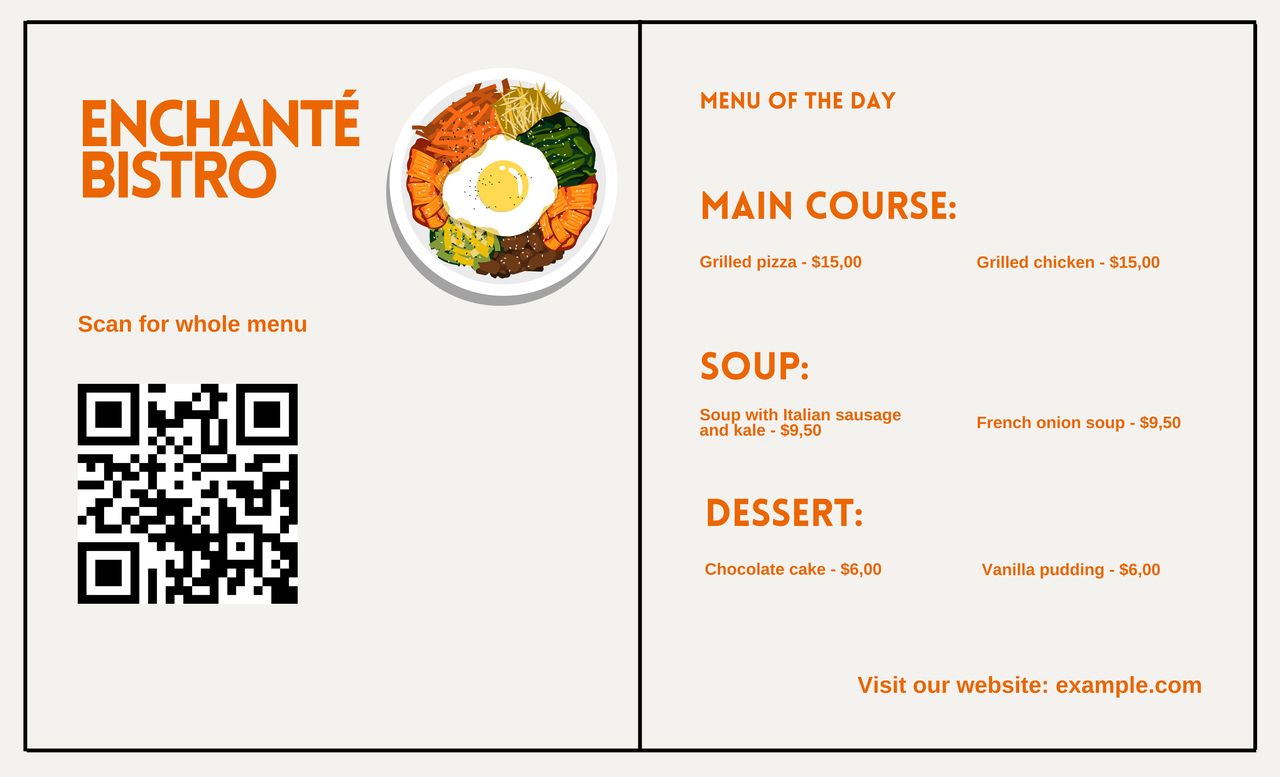
2. Promote the Sale of Specific Items with Photos
The visuals are compelling. To leverage this:
- High-Quality Images: Use professional photographs of your dishes.
- Strategic Placement: Feature photos of high-margin items prominently.
- Realistic Representation: Ensure the photos accurately reflect the dishes that are served.
This approach can significantly increase the appeal and sale of specific items.
3. The Impact of Descriptive Titles on Your Menu
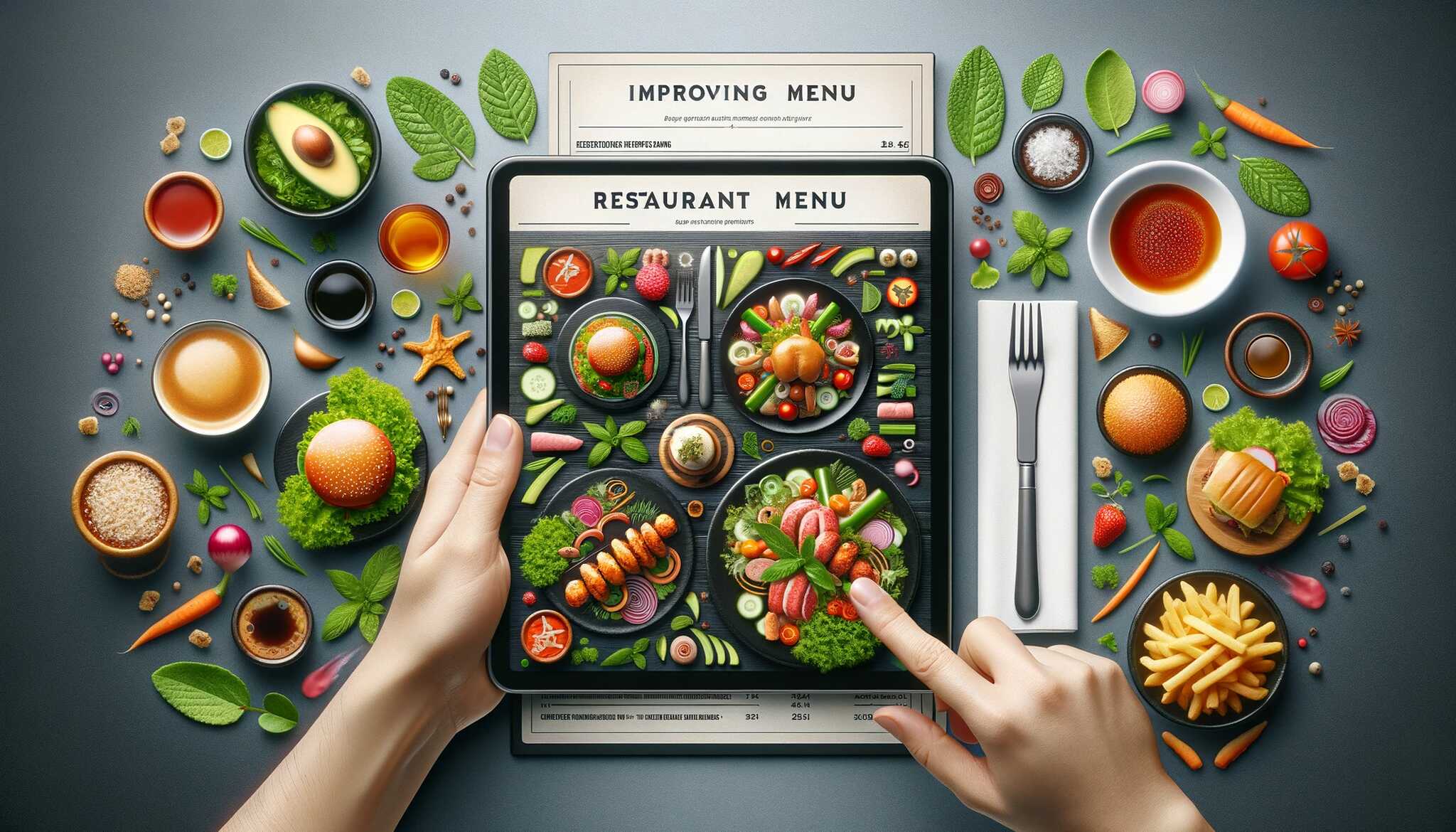
Descriptive titles can transform a mundane menu into an enticing culinary journey. Here's how:
- Use Evocative Language: Describe dishes that evoke taste and aroma.
- Be Precise: Offer just enough description to intrigue without overwhelming.
- Cultural References: Use names that reflect the dish's cultural origin, if applicable.
A well-crafted title can make your menu items more memorable and appealing.
4. Seasonal Items and Specials: A Business Secret
Seasonal items can create a buzz and keep your menu fresh. To capitalize on this:
- Regular Updates: Introduce new items in line with the seasons.
- Source Locally: Use seasonal, locally sourced ingredients for authenticity.
- Promote Exclusivity: Highlight the limited availability of these items.
This strategy adds variety and showcases your commitment to quality and sustainability.
5. The Language of Food: Write to Entice
Your menu's language should be as delectable as the food you serve. To achieve this:
- Tone and Style: Use a consistent, appealing tone that matches your brand.
- Sensory Descriptions: Include sensory details to stimulate the imagination.
- Clarity: Be clear and concise to ensure easy understanding.
Crafting your menu with enticing language can significantly enhance its appeal.
6. The Role of Visual Aids in Boosting Sales
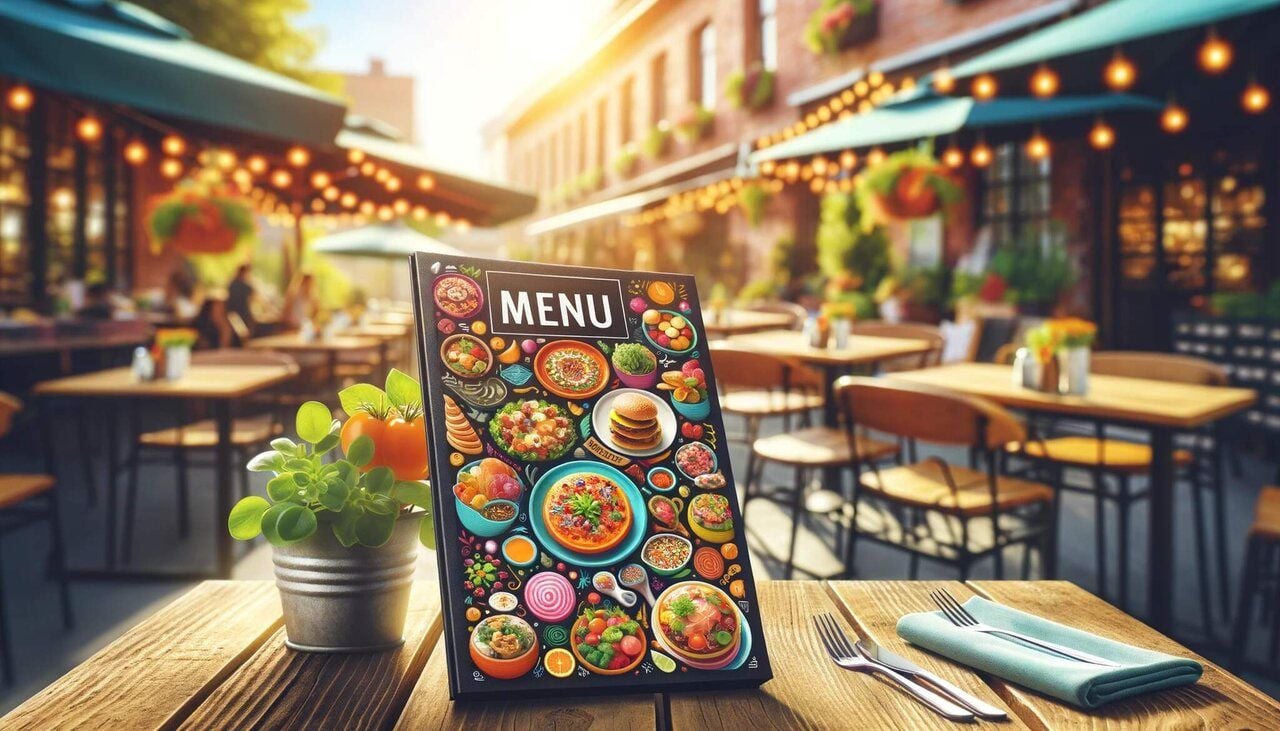
Visual aids, such as icons and color codes, can be powerful tools. Implement them by:
- Icons for Special Diets: Use icons to indicate vegan, gluten-free, or spicy options.
- Color Psychology: Utilize colors that evoke certain emotions or appetites.
- Consistency: Maintain a consistent visual theme throughout the menu.
- Professional Photography: Invest in high-quality photography to make your dishes look as appealing as possible.
- Interactive Digital Menus: Consider using tablets or interactive digital displays that showcase your dishes in high resolution.
Well-presented photos can be a deciding factor for customers when choosing what to order.
Incorporating visual aids can make your menu more user-friendly and visually appealing, thus boosting sales.
7. Prioritizing Layout in Menu Planning
The layout of your menu is crucial in guiding customer choices. To optimize it:
- Eye Movement: Understand how customers read a menu and place items accordingly.
- Categorization: Group items logically to facilitate easy decision-making.
- Whitespace: Use whitespace effectively to avoid a cluttered appearance.
A well-structured menu layout can influence customer choices and improve their overall experience.
8. Explore Different Menu Designs
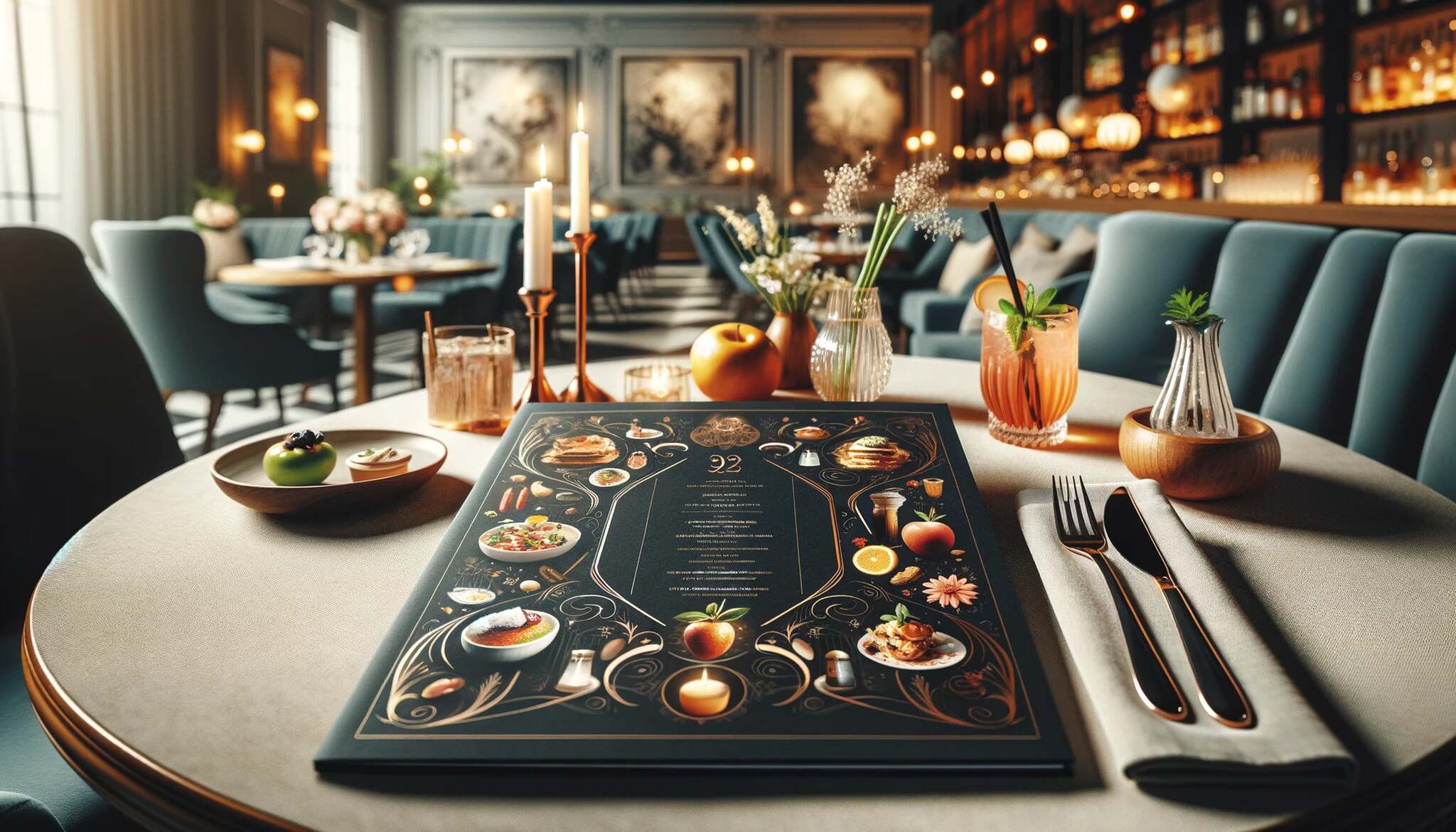
The design of your menu should reflect your restaurant's personality. Here's how to explore different designs:
- Thematic Designs: Align your menu's design with your restaurant's theme.
- Test and Iterate: Experiment with different layouts and gather customer feedback.
- Professional Help: Consider hiring a professional designer for a unique and cohesive look.
- Match Your Restaurant's Theme: Whether it's a modern, minimalist look or a rustic, vintage style, your menu should complement your restaurant's overall theme.
- Be Consistent with Your Branding: Use colors, fonts, and logos that align with your restaurant's brand identity.
- Stay Updated: Regularly refresh your menu design to keep it looking current and on-trend.
A thoughtfully designed menu can significantly enhance your brand's image and appeal.
9. Change Descriptions for a Better Appeal
The way you describe your dishes can make a world of difference. Improve your descriptions by:
- Storytelling: Incorporate brief stories or origins of certain dishes.
- Sensory Words: Use words that evoke taste, smell, and texture.
- Avoid Jargon: Keep descriptions accessible to all diners, avoiding overly technical culinary terms.
- Use Appealing Adjectives: Words like "succulent," "crispy," and "aromatic" can make a dish sound more appealing.
- Tell a Story: Share the story behind a dish, its origins, or why it's a chef's special to create a connection with your customers.
- Be Accurate and Honest: While it's important to be appealing, ensure that your descriptions accurately reflect the dish to avoid customer disappointment.
Engaging and descriptive language can transform a simple menu item into an irresistible dish.
10. Special Offers: Their Role in Boosting Sales
Special offers are a tried-and-tested way to attract customers. Whether it's a limited-time dish or a happy hour deal, these offers can drive sales and bring in new patrons. Implement them by:
- Creating Themed Specials: Tie your offers to seasons, holidays, or events to keep them exciting and relevant.
- Loyalty Programs: Introduce loyalty programs that reward repeat customers with special deals or discounts.
- Dynamic Pricing: Experiment with dynamic pricing during different times of the day or week to maximize profits and manage customer flow.
Special offers not only provide value to your customers but also create opportunities for upselling and cross-selling.
11. Keep Your Menu Sleek and Clean
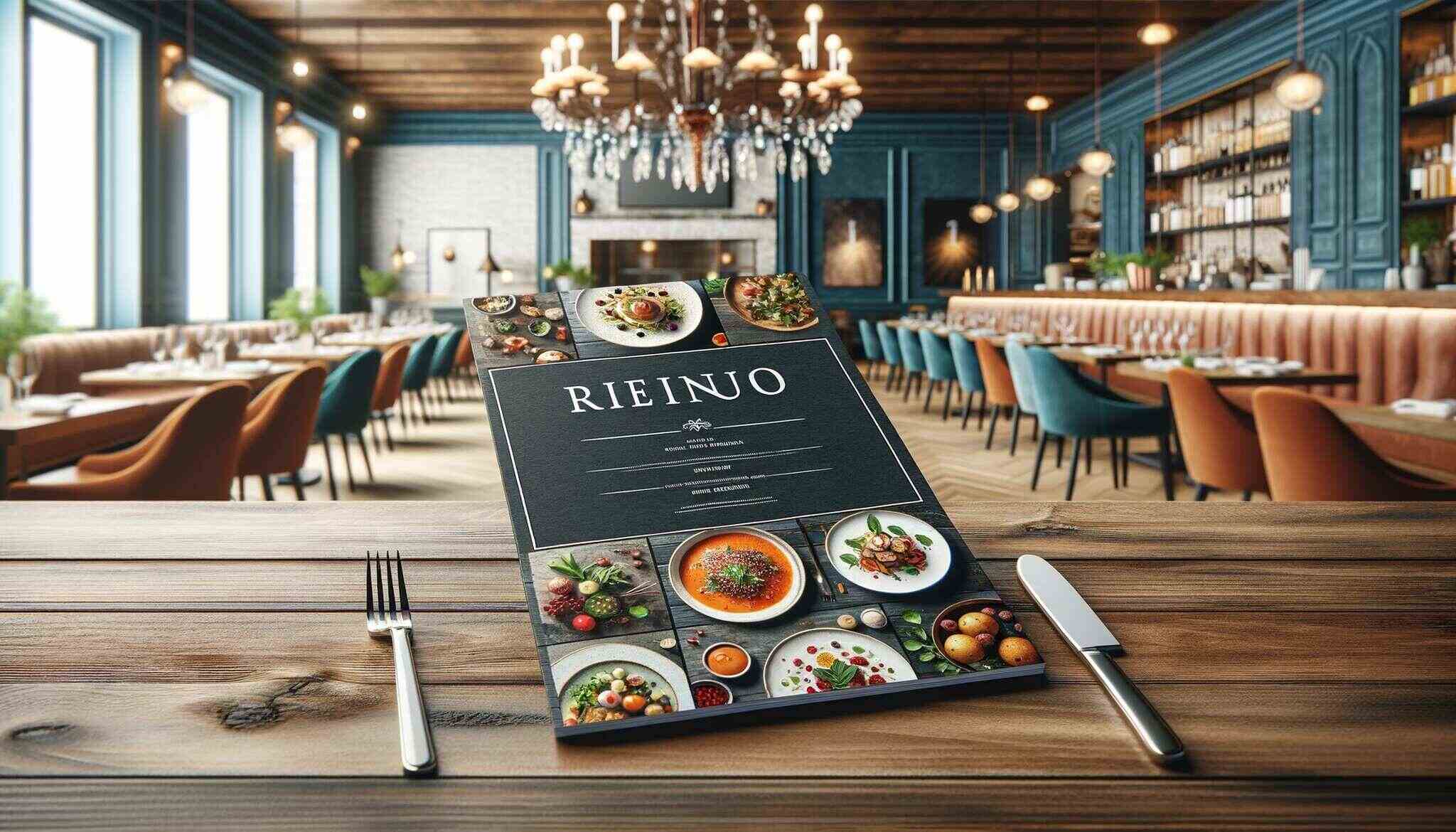
A cluttered menu can be overwhelming. Keeping your menu clean and well-organized is key to a good customer experience. To achieve this:
- Limit Choices: While variety is good, too many choices can lead to decision fatigue. Streamline your menu to include your best and most profitable dishes.
- Clear Typography: Use clear, easy-to-read fonts and avoid overly decorative typefaces that can be difficult to read.
- Whitespace is Key: Utilize whitespace effectively to create a menu that's easy on the eyes and simple to navigate.
A sleek, well-organized menu is more than just aesthetically pleasing; it makes the decision-making process easier and more enjoyable for your customers.
12. Packaging the Meal: An Art
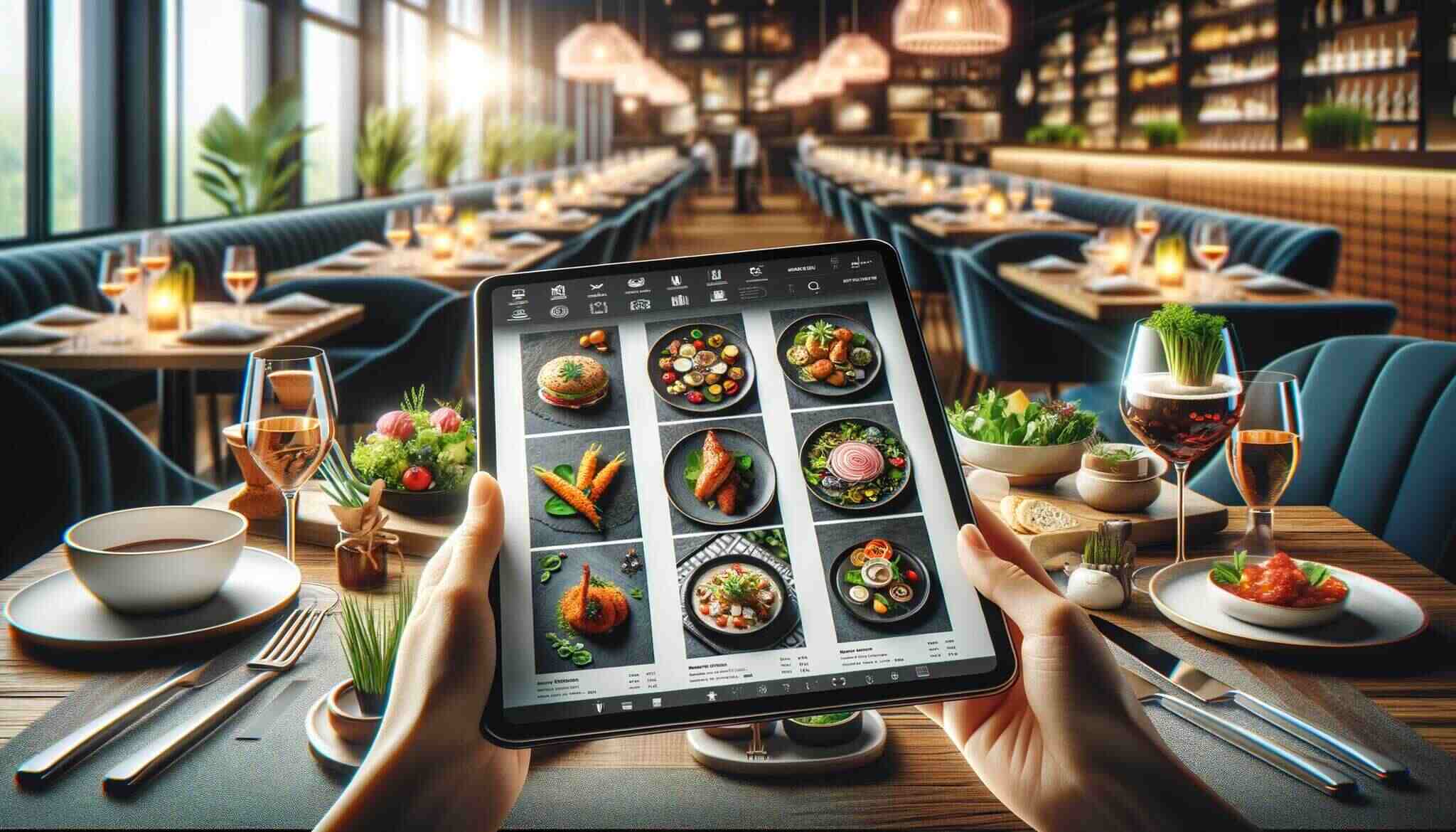
How you present your food, even on the menu, can greatly impact the perceived value of your dishes.
Here's how to enhance your meal packaging:
- Detailing Presentation: Use descriptions on your menu that highlight the presentation and packaging of your dishes.
- Eco-Friendly Packaging: Emphasize using sustainable, eco-friendly packaging, especially for takeout and delivery options.
- Creative Packaging Solutions: Consider innovative packaging solutions that are not only functional but also add to the aesthetic appeal of your meals.
Attractive and sustainable packaging can significantly enhance the overall appeal of your food and reflect positively on your brand.
13. Use Innovative Pricing Strategies
Experiment with pricing strategies like decoy pricing, bundle deals, and psychological pricing to encourage spending.
Innovative pricing strategies can make your menu more appealing and influence customer spending patterns.
Here's how you can experiment with pricing:
- Decoy Pricing: Introduce a decoy option at a higher price point to make other items look more affordable.
- Bundle Pricing: Offer meal combos or fixed-price menus that provide value while encouraging customers to try multiple items.
- Psychological Pricing: Experiment with pricing techniques, like ending prices with .95 or .99, to make items appear less expensive.
Effective pricing strategies can influence customer choices and increase sales and customer satisfaction.
How to Make Your Restaurant Menu Customer-Friendly
A customer-friendly menu goes beyond just listing your dishes; it's about creating an experience that is enjoyable, accessible, and satisfying for all your patrons. Let's explore how you can achieve this.
Keeping Your Menu Easily Accessible
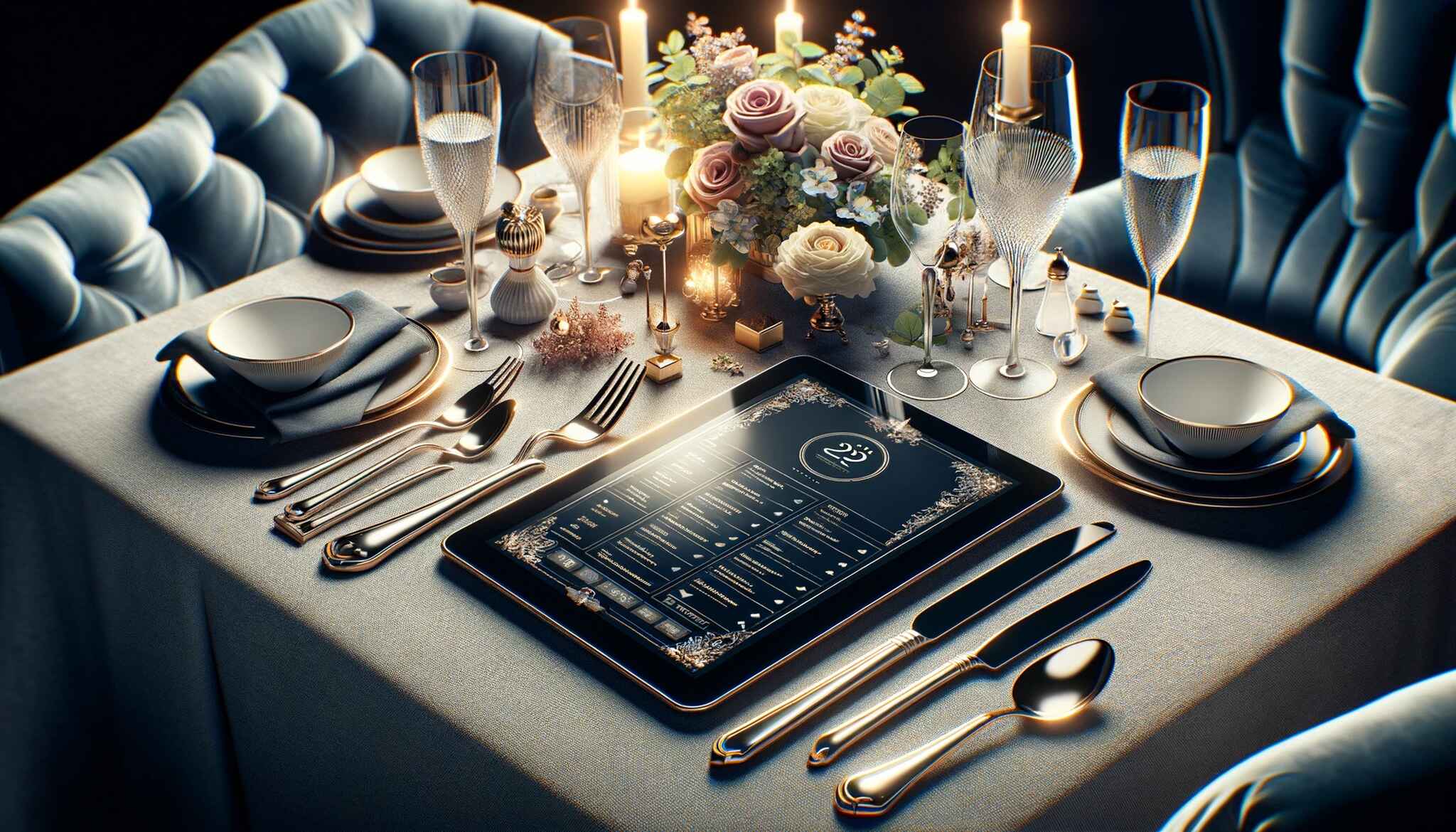
In our fast-paced, digital world, accessibility is critical to customer satisfaction. Here's how to ensure your menu is easily accessible:
- Digital Presence: Ensure your menu is available online, ideally on your website and social media platforms. This allows customers to preview your offerings before they visit.
- Mobile-Friendly Design: Ensure your online menu is mobile-friendly, as many customers will access it via smartphones.
- QR Codes for Convenience: As we explained before, utilize QR codes in your restaurant, allowing customers to access your menu on their smartphones quickly.
- Accommodate Diverse Needs: Provide alternative menu formats for those with specific needs, such as extensive print menus for visually impaired customers or allergen information for those with dietary restrictions.
- Readable Fonts: Use fonts that are easy to read for all age groups.
A menu that is easily accessible and accommodates diverse needs is not just considerate; it's a reflection of your commitment to inclusive customer service.
Understanding Your Customer: A Key to Success
Knowing your customers is essential in making your menu customer-friendly.
To understand your customer base:
- Conduct Surveys and Feedback Sessions: Regular feedback helps you understand what your customers enjoy and what they would like to see improved.
- Analyze Sales Data: Keep track of which items are popular and which aren't. This data is invaluable in making informed decisions about your menu.
- Demographic Research: Understand the demographics of your area. Are your customers primarily families, young professionals, or tourists? Tailor your menu to suit their preferences.
By understanding your customers, you can create a menu that resonates with them, encouraging repeat business and word-of-mouth recommendations.
Offering Food in Two Portion Sizes: A Decisive Factor
Offering different portion sizes can significantly enhance customer satisfaction by catering to varying appetites and preferences.
Here's how to implement this effectively:
- Defined Options: Indicate different portion sizes on your menu, helping customers make informed choices.
- Strategically Priced: Price the different sizes in a way that offers value for both options, making it easy for customers to decide based on their needs.
- Variety and Choice: Different portion sizes allow customers to choose based on their hunger level, dietary restrictions, or desire to try multiple dishes.
Providing portion options can meet more comprehensive customer needs, leading to a more personalized and satisfying dining experience.
Dietary Considerations and Allergen Information
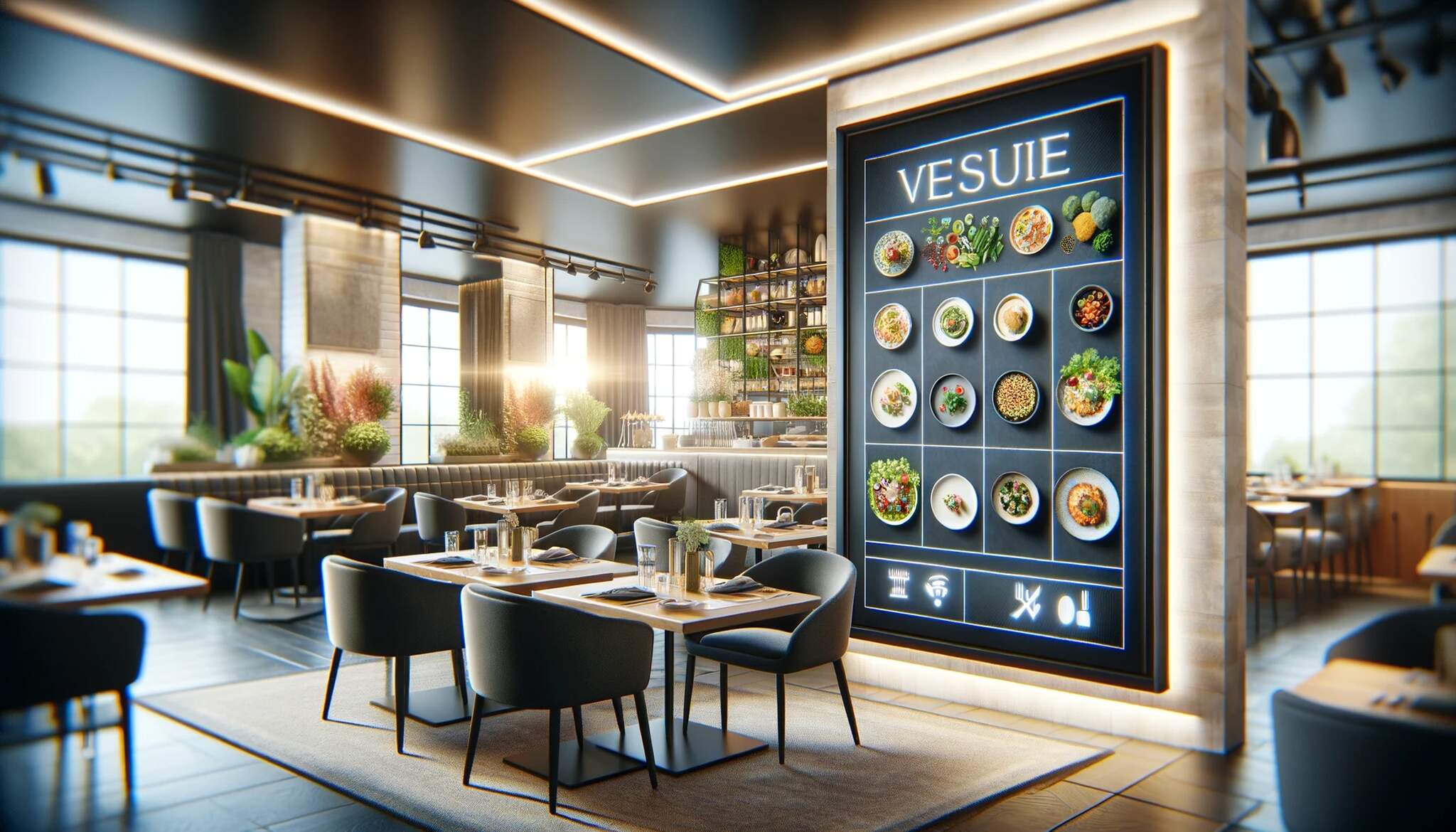
In today's health-conscious world, catering to various dietary needs is essential.
Here's how to make your menu more inclusive:
- Clear Allergen Labels: Clearly label dishes that contain common allergens like nuts, gluten, or dairy.
- Vegetarian and Vegan Options: Include a range of vegetarian and vegan dishes to cater to plant-based diets.
- Customization Options: Offer customization options, allowing customers to omit or substitute ingredients based on their dietary needs.
By considering various dietary needs and preferences, you make your restaurant a welcoming place for a broader range of customers.
Menu Readability: Font, Color, and Layout
The readability of your menu is fundamental to its user-friendliness.
Here are some tips to enhance readability:
- Font Choice: Choose fonts that are easy to read. Avoid overly stylized fonts that might look attractive but are hard to decipher.
- Color Contrast: Ensure sufficient contrast between the text and background colors. High contrast improves readability, especially in dimly lit settings.
- Logical Layout: Organize your menu logically, grouping items in a way that makes sense and is easy to navigate.
A menu that's easy to read and navigate enhances the customer experience, making it easier for them to make satisfying choices.
Incorporating Customer Feedback in Menu Design
Customer feedback is a goldmine of information and should be a critical factor in your menu design.
Here's how to utilize it:
- Regularly Update Based on Feedback: Use customer feedback to periodically update your menu, whether tweaking descriptions, adjusting prices, or adding new dishes.
- Engage Customers in the Process: Consider involving your customers in the menu design process, perhaps through taste tests or voting on new dishes.
- Respond to Trends: Stay aware of food trends and customer preferences, and be willing to adapt your menu accordingly.
Actively incorporating customer feedback shows that you value their opinions and are committed to improving their dining experience.
Conclusion
Remember that your menu is much more than just a list of dishes. It's a powerful tool that tells the story of your restaurant, showcases your culinary creativity, and connects with your customers.
That's why knowing how to improve the restaurant menu is crucial.
Through thoughtful design, customer-friendly approaches, innovative packaging, and strategic pricing, your menu can become a critical factor in defining the success of your restaurant.
Embrace these strategies with enthusiasm and creativity, and watch as your menu transforms into an irresistible invitation to a memorable dining experience.
Frequently Asked Questions
How often should I update my restaurant menu?
Regular updates are recommended to keep your menu fresh and aligned with customer preferences, seasonal ingredients, and current dining trends. A good practice is to review and tweak your menu quarterly, with minor adjustments as needed in between.
Can using QR codes for menus boost customer satisfaction?
Yes, QR codes can significantly enhance the dining experience by offering convenience, reducing wait times, and ensuring that customers always have access to the most up-to-date menu.
How can I make my menu more accessible to people with dietary restrictions?
Clearly indicate which dishes cater to common dietary restrictions like gluten-free, vegan, or nut-free options. Consider including a separate section or symbols next to the dish names for easy identification.
Discover these blog posts before you go:


